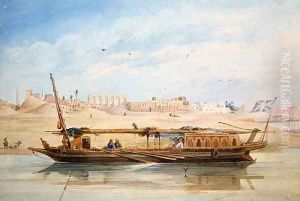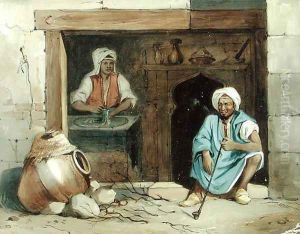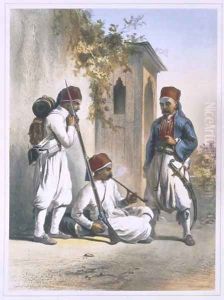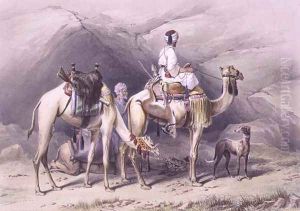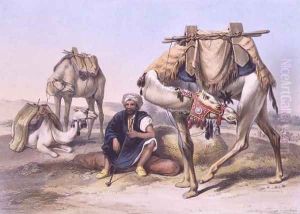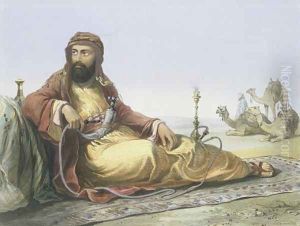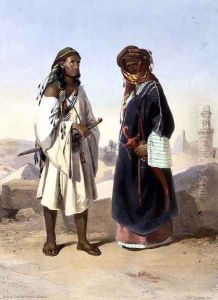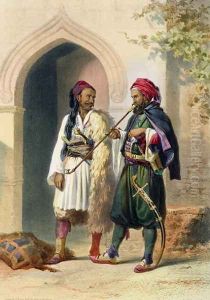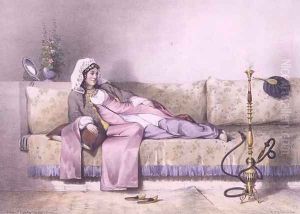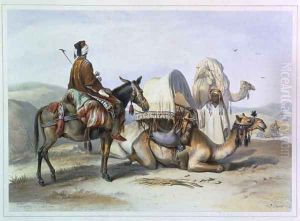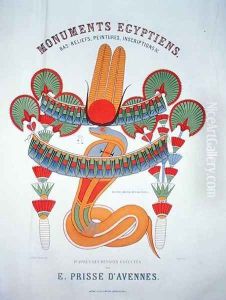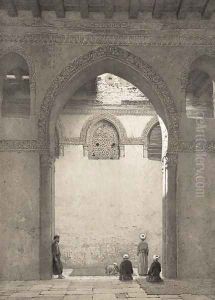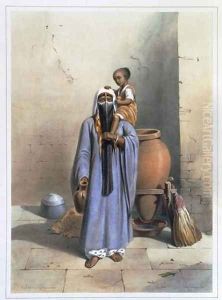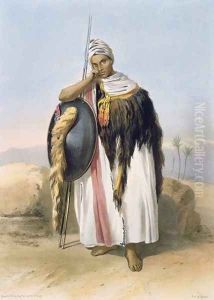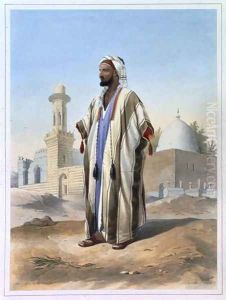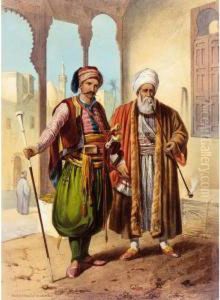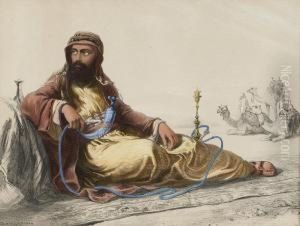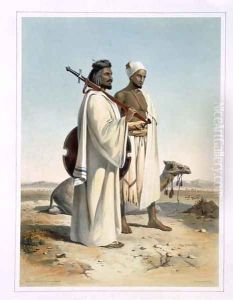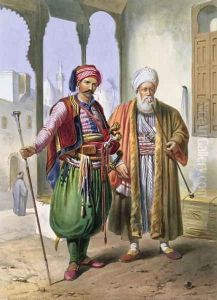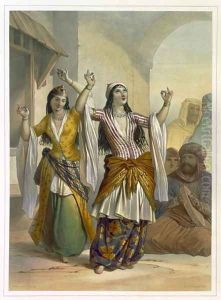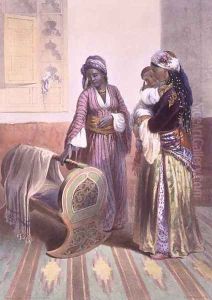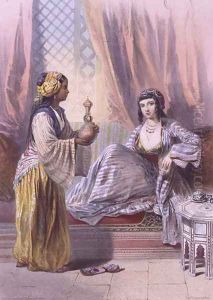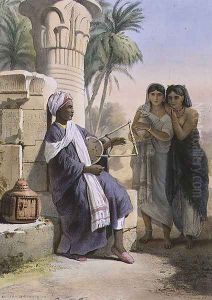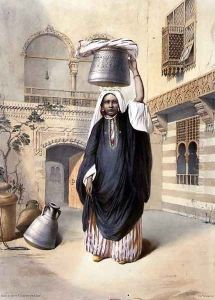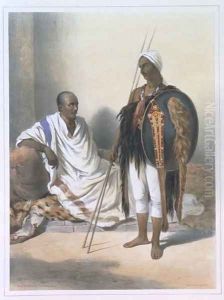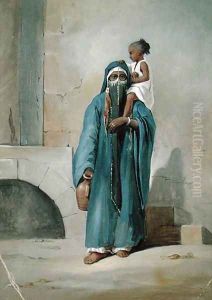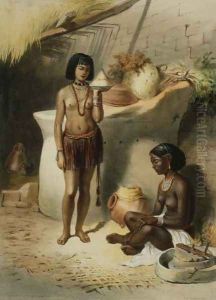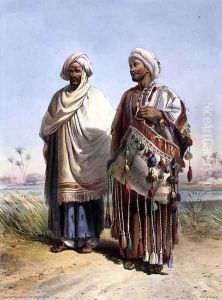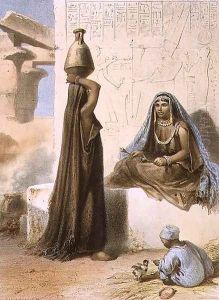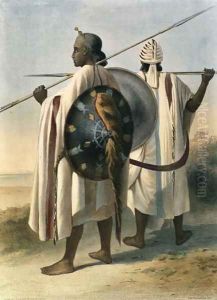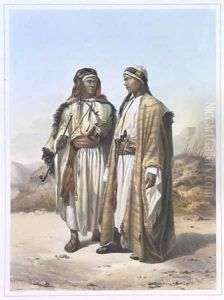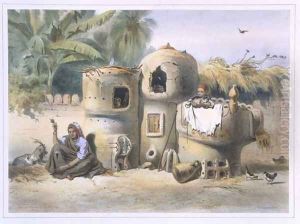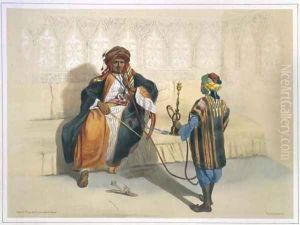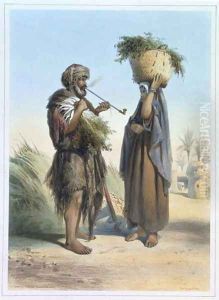Emile Prisse d'Avennes Paintings
Émile Prisse d'Avennes, born Achille-Constant-Théodore-Émile Prisse d'Avennes in 1807 in Avesnes-sur-Helpe, France, was an influential Orientalist, artist, and Egyptologist. His deep fascination with the East led him to spend much of his life studying and documenting the art, architecture, and cultures of Egypt and the Middle East.
Prisse d'Avennes initially studied engineering before embarking on his travels to the East. In 1827, he first traveled to Egypt, where he began his extensive work of documenting Egyptian antiquities. He adopted Egyptian attire and customs, which allowed him to integrate into local society and gain access to locations that were typically restricted to Europeans. Prisse d'Avennes was particularly interested in Islamic art and architecture and was one of the first Europeans to recognize its significance and value.
During his time in Egypt, Prisse d'Avennes conducted archaeological excavations and recorded his findings in detailed drawings and writings. His work was not limited to ancient Egyptian art; he also focused on Islamic art, which at the time was less understood in Europe. His drawings and lithographs served as a bridge between the Islamic world and the Western audience, contributing significantly to the 19th-century Orientalism movement.
Prisse d'Avennes' major works include 'Histoire de l'art égyptien' (History of Egyptian Art) and 'L'Art arabe' (Arab Art), which contained illustrations of artifacts, architecture, and scenes of daily life. These publications were monumental in their scope and detail, and they provided an unprecedented resource for scholars and the general public interested in the Middle East's cultural heritage.
After nearly two decades in Egypt, Prisse d'Avennes returned to France in the 1850s, where he continued to work on his publications and share his knowledge. His contributions to the understanding of Egyptian and Middle Eastern art were celebrated, and he was awarded several honors for his work. Émile Prisse d'Avennes died in 1879, leaving behind a legacy that continues to be a valuable resource for historians and art enthusiasts.
